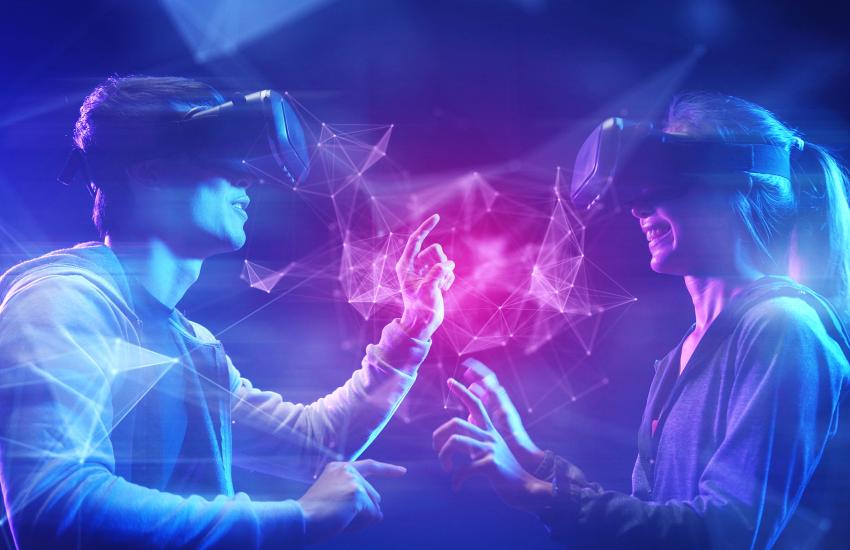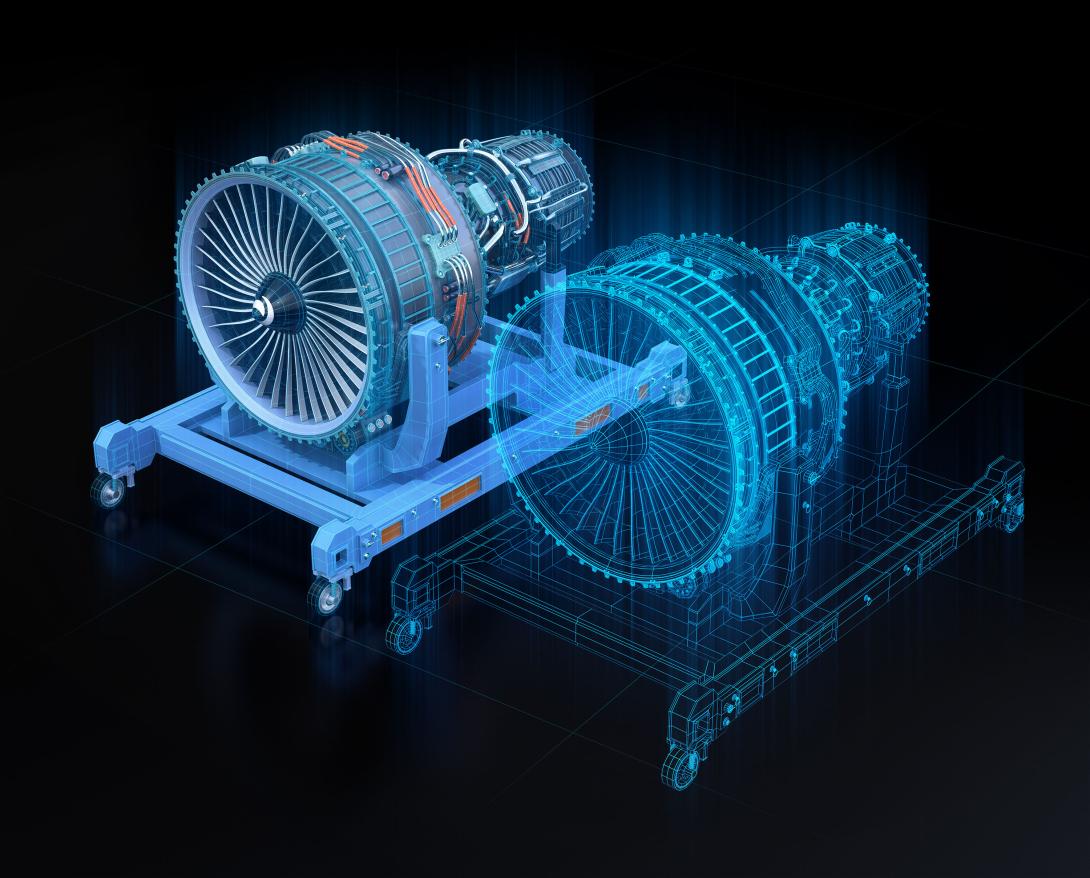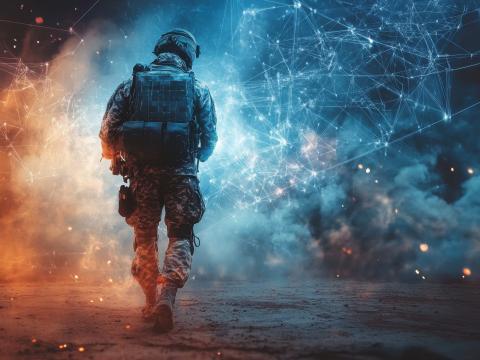The Military Metaverse and the Future of Large-Scale Combat Operations
After two decades dedicated to counterinsurgency, the U.S. military and many of its allies seek to regain expertise in conducting large-scale combat operations. Large-scale combat operations in modern multidomain environments entangle systems and soldiers in rapidly evolving tactical webs of interconnected sensors and shooters. The scope and pace of these missions require new approaches to tactics along with information technology solutions.
Those capable of keeping pace with developments in the sophistication, scale and reach of integrated sensors, digitized environments and advanced analytics will ultimately have a distinct advantage in future large-scale combat operations (LSCO) conflicts. As such, the military metaverse should be built to ensure victory in future LSCO.
The military metaverse would be a digital environment that enables military personnel to train for future LSCO. It would be a virtual environment where soldiers (and algorithms) can interact with each other and simulated enemies. The metaverse would be based on data collected from real-world environments, and it would allow soldiers to experience a wide range of combat scenarios. It would also be a valuable tool for commanders, to plan, simulate and execute complex operations virtually and then use these digital playbooks for automated responses.
Tim Berners-Lee originally coined metaverse to describe a 3D virtual space. The technical specifications of the metaverse comprise a digital environment where people, places and objects exist through digital representations.
To render a digital world useful, one must first render the real-world environment. Topographic data and data about roadways, buildings and critical infrastructure vary little over time. This information could populate a relatively stable digital lattice in a military metaverse upon which more dynamic digital representations could reside.
In the military metaverse, ever-changing data from real-world objects, such as the movement of civilian and military people and equipment, would be collected and collated to render digital twins—a digitized representation updated from real-time data. Digital twins pull data from Internet of Things (IoT) devices for digitization. They can represent any type of object, vehicle or system. They can also model physical environments such as buildings, factories, warehouses or larger environment systems like railroads, highways and energy grids.
In a military metaverse, a collection of networked sensors and data feeds on military platforms, and personnel would feed digital twin data. Additionally, digital twin data could populate from open-source data repositories similar to how IoT devices operate commercially today.
Operational insights can be generated from digital twins by monitoring how the twin performs and comparing that result to the desired outcome. Real-time data can feed advanced simulations and machine learning models. Corporations that support LSCO now offer sophisticated suites of metaverse tools involving digital twins.
Microsoft’s Azure advertises the use of digital twins for developing models and simulations for product design. Amazon Web Services employs TwinMaker to exploit existing data streams related to factory production lines. Nvidia advertises its 3D Omniverse platform to extend reality from the real world into digital environments. Users of this 3D Omniverse platform can interact within metaverse digital environments, either through virtual reality or augmented reality devices.
Industry use-cases for digital twins already appear compelling. For instance, CNH Industrial, producer of various industrial and commercial vehicles, has used digital twins to optimize maintenance at one of its production plants. Anheuser-Busch InBev has employed digital twins to optimize its production line. Furthermore, railways and other shipping hubs have turned to digital twins to optimize cargo shipping.
Digital twins are not being used just to improve production lines. They also improve unmanned systems and human-machine teams. For example, Tesla regularly sends new updates to its vehicles with protocols and processes to enhance driving experiences. Researchers also have found benefits by employing digital twins to examine healthcare and guide decisions of medical works on the front lines of trauma and triage.
Insights obtained from simulations based on digital twins, enabled by machine learning (ML) techniques, may prove critical in developing optimized plans and managing forces across LSCO. The advances from the AI and ML community have moved beyond besting humans at the game of Go.
An established military multiverse would enable future military planners to create simulations of tactical and operational combat approaches guided by AI. These plans, produced through limitless reps in a digital environment, would provide military planners with critical insights and valuable study materials.

A military metaverse would also encourage military teams to collaborate. Interacting with digital replicas laid over an actual physical environment either in 2D or 3D can enhance the ability of individuals and teams to visualize, describe and direct operations. Additionally, military members in different geographic locations can analyze the same assets and share insights in a distributed fashion.
Gathering data from units participating in training, be it at home station or a national training center to feed digital twins, also could drive the development of new doctrine and protocols for human and unmanned systems’ decision-making. Providing information from digital twins of currently operating systems and soldiers could prove an invaluable training aid for units preparing to deploy.
When combined with ongoing efforts to develop a simulated training environment, the military metaverse would be an essential tool for training soldiers for future combat operations. It would allow soldiers to train in a safe and controlled environment and help them develop the skills they need to win future battles.
For military planners, harvesting environmental data over time and using ML techniques to detect patterns in this data may reveal time-based cues missed by human analysts. Observing how a military activates forces, deploys them and ultimately employs them across a series of tactical and operational problems can help identify critical vulnerabilities associated with triggers linked to time and space.
The capacity to gain an accurate and deep intuitive understanding of a problem or a process enables the development of optimized responses. Today, AI and ML models appear to be approaching a level of capability to develop optimized responses beyond human limits. As such, developing protocols and processes to control unmanned systems, particularly within LSCO environments, may prove decisive in determining the outcome of future wars.
Evidence exists that a military multiverse could improve the use of unmanned systems. For instance, farmers have turned to the use of drones to monitor information regarding their crops. Farmers capture information about the health of their crops by regularly flying drones over their fields. They then use the data captured from these flights to render digital twins of plants and build models to track growth, moisture and disease. These models then offer predictions and drive actions with humans in, on or out of the loop.
Increasing watering may not require human approval, whereas a decision to increase pest control administration might. Similarly, optimized control plans for military unmanned systems could enable routine and conflict protocols. For example, a routine protocol may optimize flight patterns for routine post-security missions, whereas a combat mission may operationalize to direct unmanned quick response forces when a unit is attacked.
Ultimately, investments in digital twins and metaverse platforms are made so that returns in improved reasoning and decision-making can be realized operationally and tactically. At the tactical level, insights gleaned from simulations involving digital twins can inspire new protocols for IoT devices. These improved protocols can then guide autonomous agents (unmanned systems or small teams of soldiers) operating at the tactical edge of an organization.
Decisions to share information and receive expertise at the right time in the right context in a military metaverse will require decisions regarding processing information locally or exporting it for remote analysis.
When it comes to IoT and the metaverse, there are two main schools of thought: those who believe that devices should process information locally and those who say that devices should export information for remote analysis.
Processing information locally allows devices to act faster and makes them more efficient. Local processing also enables machines to be more autonomous, as they do not need to rely on a remote server to function. Arguments in favor of this approach value the reduction in latency, costs and security risks associated with transporting data off-site.
The benefits of exporting information for remote analysis are that it allows devices to share data with other devices and facilitates more comprehensive analysis gained from insights synthesized across multiple sensors. This process enables expanded data warehousing. Remote analysis also allows devices to be monitored and controlled from a central location.
Both approaches have pros and cons, and the best practice for a given application depends on the system’s specific needs. Local processing is better for applications that need to be fast and efficient, while remote analysis is better for applications that need to be able to communicate with other devices. In the military metaverse, right-sizing this decision, in consultation with stakeholders from each service component and branch, will be critical.
Some argue there are a few reasons why the U.S. military should show caution in using a metaverse to inform operational decisions. First, it is unclear whether a metaverse would be an accurate representation of the real world. Second, even if a metaverse were accurate, it would be challenging to ensure that all relevant information was included. Finally, using a metaverse to make operational decisions could lead to confusion and chaos if the metaverse were to malfunction or be targeted by an adversary to produce inaccurate information.
Protecting the metaverse also presents several cybersecurity challenges. First, the metaverse needs to be able to authenticate users and devices. This can be done using various methods, such as passwords, biometric scans or cryptographic keys. Zero-trust approaches may also buy down this risk. Second, the metaverse needs to be able to protect users and organizational data. This may be achieved by encrypting data with strong algorithms and using access controls to restrict which systems and users can access user data. Third, the metaverse needs to be able to protect against cyber attacks. This can be done by using firewalls against unauthorized access and by using intrusion detection systems to detect and prevent cyber attacks at key access points into the military metaverse.
Despite these concerns and perhaps some senior leaders’ nostalgia for grease pens and map boards, the United States should not be dissuaded from investing in a military metaverse. Rather, as the services investigate unified cloud and network solutions, they should also engage with industry to develop requirements that reduce these risks and develop safeguards to protect the metaverse from adversarial threats.
The U.S. military faces many daunting challenges in LSCO. These challenges include the need to maintain communication and coordination among many units, to deploy and assemble forces rapidly and to effectively engage the enemy in a complex battlefield involving multiple domains.
The U.S. military requires a metaverse armed with the means to model and predict potential outcomes across all warfighting functions to improve its plans, reduce the fog of war and optimize the operational control of its forces. While no plan produced from this metaverse may survive first contact, the investments made in its development will ensure future units survive and thrive in LSCO environments.
Lt. Col. Ryan Kenny, USA, created an online forum to foster discussions on emerging technologies at www.militarycommunicators.org. The views expressed here are his alone and do not represent the views and opinions of the Defense Department, U.S. Army or other organizations with which he has had an affiliation.






Comments